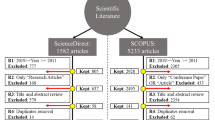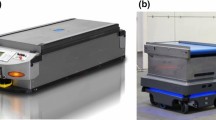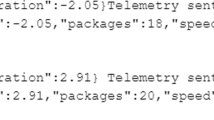Abstract
Analyses of the customer-order process in the automotive industry show that the vision of perfectly synchronized material flows in complex industrial production and logistics environments is still far from having become reality. The traditional strategy of maintaining high safety stock levels to counter the effects of ever more variety and uncertainty in the customer demand leads to unbearable cost in today’s competitive markets. Moreover, the responsiveness in the complex supply networks remains low. Thus, the goals of short order lead-times and on-time deliveries to customers are often missed. This places urgency onto the implementation of highly flexible logistics and production systems. The concept of just-in-sequence flow-production promises to allow for both accommodating rising degrees of product variety and cost efficiency. However, its success is dependent on reliable logistics and the ability to avoid turbulences within the material flows. Thus, it needs control of the stability of order sequences and intelligent strategies to hedge against any disturbances that cannot be proactively removed in the production flow. This paper suggests the introduction of systematic key performance indicators to make process instability transparent and manageable. Based on that, dimensioning methods for hedging against inherent sequence instability of production processes by means of physical or virtual re-sequencing are presented.









Similar content being viewed by others
Notes
This paper is based on parts of the doctorate dissertation of the author [14].
References
Alford D, Sackett P, Nelder G (2000) Mass customisation—an automotive perspective. Int J Prod Econ 65:99–110
Bucklin LP (1965) Postponement, speculation and structure of distribution channels. J Mark Res 2:26–32
Coronado AE et al (2004) Enabling mass customization: extending built-to-order concepts to supply chains. Prod Plan Control 15(4):398–411
Dannenberg J, Gehr F, Hellingrath B, Kleinhans C (2004) Future Automotive Industry Structure (FAST) 2015. Materialien zur Automobilindustrie (32), VDA, Frankfurt
Ding FY, Sun H (2004) Sequence alteration and restoration related to sequenced parts delivery on an automobile mixed-model assembly line with multiple departments. Int J Prod Res 42(8):1525–1543
Fredriksson P, Gadde LE (2005) Flexibility and rigidity in customizing and build-to-order production. Int Mark Manag 34:695–705
Grinninger J, Meissner S (2007) Durchlaufzeitstabilisierung in der Automobilfertigung. PPS Manag 1:80–83
Guenthner WA, Schröder J, Meissner S, Grinninger J (2009) Potentiale des Konzepts der stabilen Auftragsfolge in der automobilen Wertschöpfungskette. München
Gusikhin O, Caprihan R, Stecke KE (2008) Least in-sequence probability heuristic for mixed-volume production lines. Int J Prod Res 3(46):647–673
Holweg M, Pil FK (2001) Successful built-to-order strategies—start with the customer. MIT Sloan Manag Rev (Fall):74–83
Holweg M, Pil FK (2005) Flexibility first—keeping the automotive supply chain responsive through built-to-order. Ind Eng 37(6):46–51
Inman RR (2003) ASRS sizing for recreating automotive assembly sequences. Int J Prod Res 41(5):847–863
Meissner S, Grinninger J, Kammermeier F (2008) Stabilisierung des Auftragsabwicklungsprozesses durch flexible Auftragszuordnung. Z wirtsch Fabr (ZWF) 103(12):893–897
Meissner S (2009) Logistische Stabilität in der automobilen Variantenfließfertigung. Dissertation, Technische Universität München
Meyr H (2004) Supply chain planning in the German automotive industry. OR Spectr 26(4):447–470
Moessmer HE, Schedlbauer M, Günthner WA (2007) Die automobile Welt im Umbruch. In: Günthner WA (ed) Neue Wege in der Automobillogistik. Springer, Berlin, pp 3–15
Monden Y (1998) Toyota production system. Eng Manag Press, Norcross
Roodbergen KJ, Vis IFA (2009) A survey of literature on automated storage and retrieval systems. Eur J Oper Res 194(2):343–362
Spieckermann S, Gutenschwager K, Voß S (2004) A sequential ordering problem in automotive paint shops. Int J Prod Res 42(9):1865–1878
Voigt KI, Saatmann M, Schorr S (2007) Flexibilität im Netzwerk–dargestellt am Beispiel der Automobilindustrie. In: Hausladen I (ed) Management am Puls der Zeit. TCW Transfer-Centrum, München, pp 1071–1090
Weyer M (2002) Das Produktionssteuerungskonzept Perlenkette und dessen Kennzahlensystem. Helmesverlag-Karlsruhe, Karlsruhe
Author information
Authors and Affiliations
Corresponding author
Additional information
This paper has been invited for publication in LOGISTICS RESEARCH. It was the winner of the 2009 ‘‘Science Award’’ by the Federal Logistics Association (BVL) of Germany.
Rights and permissions
About this article
Cite this article
Meissner, S. Controlling just-in-sequence flow-production. Logist. Res. 2, 45–53 (2010). https://doi.org/10.1007/s12159-010-0026-5
Received:
Accepted:
Published:
Issue Date:
DOI: https://doi.org/10.1007/s12159-010-0026-5




